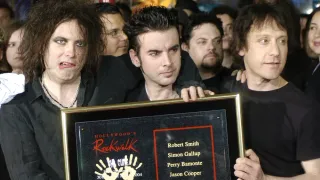Mar 31
French Minister Denounces 'Diktat' as US Tries to Export Anti-DEI Push
READ TIME: 2 MIN.
A French minister on Sunday accused U.S. diplomats of interfering in the operations of French companies by sending them a letter reportedly telling them that U.S. President Donald Trump's rollback of diversity, equity and inclusion initiatives could also apply outside of the United States.
French media said that the letter received by major French companies was signed by an officer of the U.S. State Department who is on the staff at the U.S. Embassy in Paris. The embassy didn't respond to questions this weekend from The Associated Press.
Le Figaro daily newspaper published what it said was a copy of the letter. The document said that an executive order that Trump signed in January terminating DEI programs within the federal government also "applies to all suppliers and service providers of the U.S. Government, regardless of their nationality and the country in which they operate."
The document asked recipients to complete, sign and return within five days a separate certification form to demonstrate that they are in compliance.
That form, also published by Le Figaro, said: "All Department of State contractors must certify that they do not operate any programs promoting DEI that violate any applicable anti-discrimination laws."
The form asked recipients to tick a box to confirm that they "do not operate any programs promoting Diversity, Equity, and Inclusion that violate any applicable Federal anti-discrimination laws."
The letter added: "If you do not agree to sign this document, we would appreciate it if you could provide detailed reasons, which we will forward to our legal services."
Aurore Bergé, France's minister for equality between women and men and combating discrimination, said Sunday that the letter is "a form, obviously, of interference. That's to say it's an attempt to impose a diktat on our businesses."
Speaking to broadcaster BFMTV, she said that France's government is "following the situation very closely" and working to determine how many companies received the letter.
The minister said that "many" companies have told the government that they don't plan to reply, "because they don't have a respond, in fact, to a sort of ultimatum laid out by the U.S. Embassy in our country."
"It's out of the question that we'll prevent our business from promoting social progress," the minister said. "Thankfully, a lot of French companies don't plan to change their rules."






